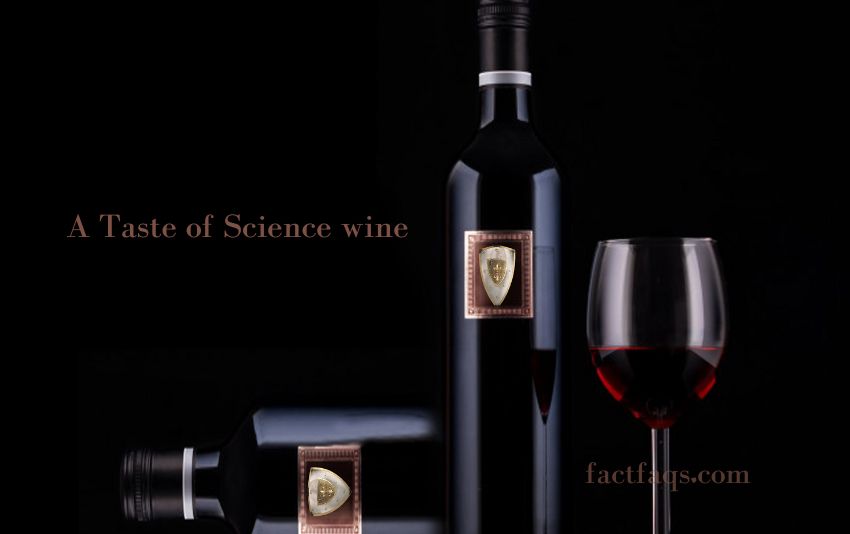The science of taste, also known as gustation, refers to the sensory perception of taste on the tongue and inside the mouth. Taste buds or taste receptors, located on the tongue and in the mouth, bind to chemicals in food and transmit signals to the brain, resulting in our perception of taste.

The Science Of Wine Tasting
The science of wine tasting is a fascinating subject to delve into. It involves understanding how our taste buds perceive and interpret the flavors present in wine. Wine tasting is not just about the simple act of sipping and swallowing; it encompasses a complex process that engages all our senses.
When it comes to the science of taste, there are several factors at play. The flavors in wine are a result of the chemical compounds present in the grapes, which can be influenced by factors such as soil, climate, and winemaking techniques.
Our taste buds, located on different parts of the tongue, are responsible for detecting the basic taste sensations – sweetness, sourness, bitterness, saltiness, and umami. These taste sensations, combined with our sense of smell and overall sensory perception, contribute to the overall experience of wine tasting.
By understanding the science behind wine tasting, we can enhance our appreciation and enjoyment of this ancient beverage.
Wine Tasting Vs. Art Of Wine Appreciation
The science of taste, also known as gustation, is the study of how taste cells sense different flavors. Taste buds, located on the tongue, sides of the mouth, back of the throat, and roof of the mouth, bind to chemicals in food and send signals to the brain.
These signals are then processed and sent to higher brain areas, including those responsible for emotions and memories. When we eat or drink, the chemical substances responsible for taste come into contact with nerve cells in the mouth. This contact activates the nerve cells, causing them to transmit messenger substances that activate further nerve cells.
Taste and smell work together to establish the flavor of a food or beverage, with smell playing a primary role. Experts believe that the first step in identifying taste is breaking down food substances into molecules. Certain tastes, such as sourness, can indicate acidity or spoilage of food.
Also Read More:
Edgenuity Earth Science Answers:
The Science Behind Gfp Axolotls:
The Remarkable Regeneration Abilities of Some Animals:
Wine Varieties And Taste
The science of taste, also known as gustation, refers to how taste cells sense flavors on the tongue and inside the mouth. Taste buds, or receptor cells, bind to chemicals in the food or drink we consume and send signals to the brain.
These signals are then processed, and some are sent to areas of the brain that control emotions and memories. This is why certain food flavors can evoke strong memories. Our sense of taste works through the activation of specific proteins in the sensory cell walls, which then transmit messaging substances to activate further nerve cells.
Taste and smell work together to establish the flavor of a food or beverage, with smell playing the primary role. Acids can give a sour taste, indicating spoilage or unhealthiness, while umami is a savory or “meaty” taste. The science of taste is a fascinating field that continues to uncover the intricacies of our sensory experience.
Frequently Asked Questions For the Science Of Taste
What Is The Science Of Taste Called?
The science of taste is called gustation or taste. Taste cells in the tongue and mouth bind to chemicals in the food or drink and send signals to the brain.
What Is Sense Of Taste In Science?
The science of taste, also known as gustation, refers to the way taste cells on the tongue and in the mouth detect chemicals in food and send signals to the brain. These taste cells, or taste buds, are responsible for the sensations of sweetness, sourness, saltiness, bitterness, and umami.
What Is The Science Of Food And Taste?
The science of food and taste is called gustation. It studies how taste cells on the tongue and mouth detect chemicals in food and transmit signals to the brain. Taste buds bind to the chemicals in food, sending signals that are processed in the brain, triggering emotions, memories, and the perception of flavor.
What Are The 5 Tastes In Psychology?
The five tastes in psychology are sweet, sour, salty, bitter, and umami. These tastes are perceived by taste buds located throughout the tongue and mouth.
Conclusion
The Science of Taste reveals the fascinating intricacies of how our taste buds work. Through taste receptors on our tongues, our brains receive signals from the chemicals in the food we eat. This process helps us distinguish between different flavors such as sweetness, sourness, and saltiness.
Understanding the science behind taste can enhance our culinary experiences and provide insights into the sensory world of food. So, the next time you savor a delicious meal, take a moment to appreciate the complex science at work on your taste buds.
